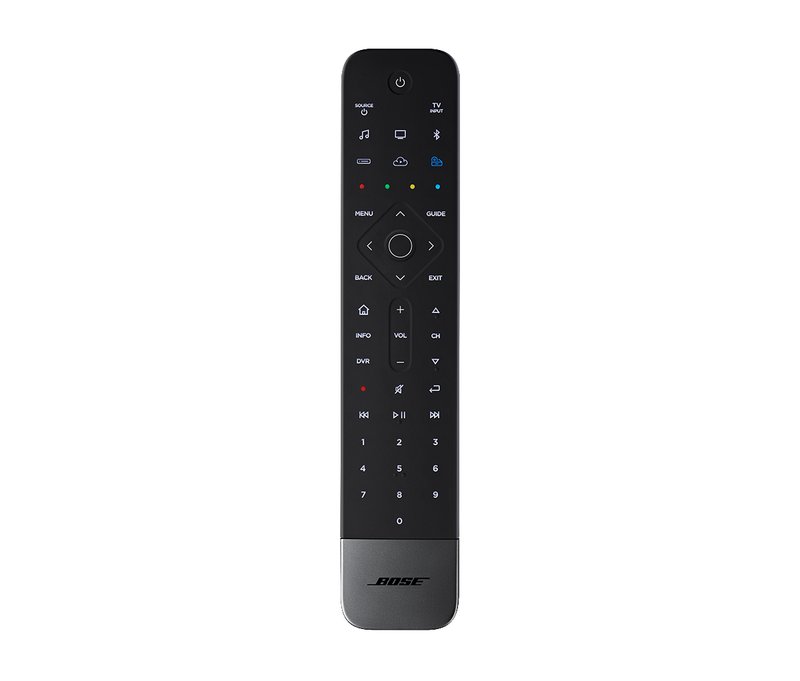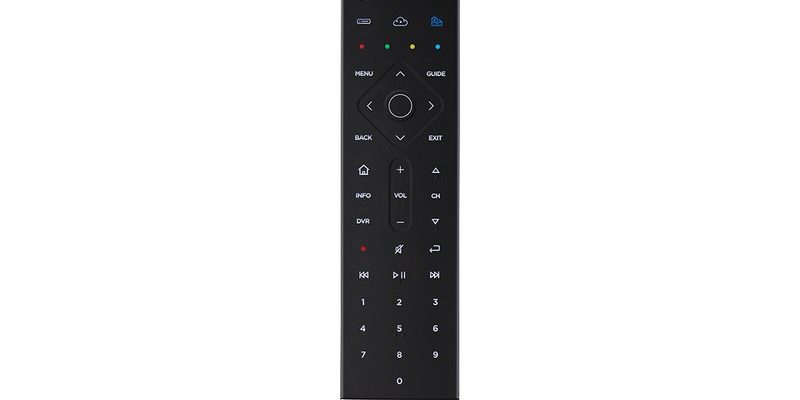
Let’s unravel what a Bose soundbar remote can (and *cannot*) do, especially when you’re trying to ditch the remote clutter. There’s some good news, some limitations, and maybe a hack or two along the way. After all, nobody wants to play “guess the remote” every time they want to binge-watch something.
How Bose Soundbar Remotes Are Designed
First off, it helps to understand what makes a Bose soundbar remote tick. Bose has a reputation for making sleek, high-quality soundbars (seriously, if you’ve ever heard one, you know the sound is next-level). The remotes themselves come in a couple of flavors: you’ve got the slim, basic models, and then there’s the bigger “universal” remote that ships with the premium soundbars, like the Bose Soundbar 700 or 900.
Bose universal remotes are built with extra buttons and functions—think volume, playback, power, even some customizable “sources.” These extra powers are meant for controlling more than just your Bose soundbar. But here’s where it gets interesting: The code that makes these remotes “universal” is old-school infrared (IR). That means they send out tiny bursts of invisible light that only work if the device you’re trying to control is set up for IR.
Most streaming devices (like Roku, Apple TV, or Amazon Fire Stick) use remote controls that talk over Bluetooth or Wi-Fi, not IR. So even if you point your Bose remote directly at your streaming stick and press “play,” nothing happens—unless the streaming device has an IR receiver. It’s a little like trying to order takeout in French when the restaurant only understands Spanish. This is where the whole remote compatibility thing gets a bit tricky.
The Limits: Why Most Streaming Devices Stay Out of Reach
Here’s the thing: Most streaming devices don’t play nice with traditional IR remotes. Devices like Apple TV, Amazon Fire Stick, and Google Chromecast are designed around Bluetooth or Wi-Fi remotes. They’re super responsive and don’t need direct line-of-sight, but they *do* leave your trusty Bose remote out of the conversation.
For example, you might own a Bose Soundbar 700, which comes with a fancy universal remote. It can pair with your TV, Blu-ray player, or even a cable box—just by entering a specific code or following a sync process. But if you try to control your streaming stick, you’ll often hit a wall. The device simply won’t “hear” the commands, because it’s listening on a different frequency, sort of like two people on different walkie-talkie channels.
Now, some streaming devices still include IR sensors—think older Rokus, or certain Android TV boxes. If you’re lucky enough to have one of these, your Bose remote might actually be able to pair up after a bit of code entry or trial and error. But honestly? In 2024, this is getting rare. Most mainstream sticks, like Fire TV or the latest Apple TV, have moved on from IR entirely.
Setting Up a Bose Remote with Compatible Devices
If you happen to own a streaming box that still accepts IR signals (maybe a Roku Ultra or a legacy model), you’ve got a fighting chance. Here’s how the typical process plays out:
- Find the pairing code: Bose includes a massive list of device codes in their manual or online help. You’ll look up your brand and model (say, “Roku”) and grab the code.
- Sync the remote: Depending on your Bose remote, there’s usually a “settings” or “program” button. You’ll hold it down, type the code, and watch for a blink or a beep to confirm the connection.
- Test the controls: Try basic functions—power, volume, source switching. If your streaming device supports IR, you should see action. If not, nothing happens… and it’s back to square one.
- Troubleshoot as needed: Sometimes a reset of the remote or the device helps. Changing batteries is a surprisingly common fix if things suddenly stop working, too.
If you get stuck, you’ll find that troubleshooting universal remotes is a rabbit hole of forums, tips, and “try this 5-digit code” threads. And while some folks eventually get their Bose remote to control a streaming device, it usually only works with IR-compatible gear.
How Universal Remotes Stack Up Against Bose Remotes
So, how does a Bose soundbar remote compare with a dedicated universal remote? Here’s where some context helps.
Most *universal remotes* (think Logitech Harmony or even the budget options from GE) are designed for maximal compatibility. They often include support for both IR and, in some cases, Bluetooth/Wi-Fi controls—sometimes even letting you control smart home devices. Their pairing process is more flexible, and you get software updates to add new gear over time.
If your goal is to control every device in your media center—including those tricky streaming sticks—a third-party universal remote may give you more power than the Bose remote will.
Bose universal remotes are excellent at what they do—controlling Bose soundbars, TVs, and basic IR devices. But they don’t branch out into advanced Bluetooth or Wi-Fi commands. So if your streaming player is the stubborn modern type, you might need to look elsewhere.
Workarounds: Do HDMI-CEC or Other Tricks Help?
You might be wondering, “Wait, can’t I use one remote for everything thanks to HDMI-CEC?” HDMI-CEC (Consumer Electronics Control) is a tech built into most TVs and connected devices that lets one remote send basic commands over the HDMI cable itself. It’s kind of like those little walkie-talkies all agreeing to use the same language.
In practice, if your TV and streaming stick support HDMI-CEC (most do), you might be able to control the streaming device with your TV remote. And if your Bose soundbar remote is programmed to control the TV, there’s a slim chance you can piggyback off that. But honestly, it only covers basic functions—volume, power, maybe input switching. Navigating streaming menus or launching apps? That’s usually out of reach.
I’ve tried this setup in my own living room. The Bose remote could turn everything on and off, but as soon as I wanted to scroll Netflix or search YouTube, I had to grab the original streaming remote. So, it’s a useful trick, but it’s no silver bullet.
Why Some Users Face Pairing or Sync Issues
Let’s talk about the not-so-fun side: troubleshooting when your Bose remote won’t pair with a streaming device or keeps losing sync. First, double-check if your device actually takes IR commands (look for a tiny black window or check the user manual for “IR remote supported”).
If it does, and things still aren’t working, it could be as simple as a low battery in the remote. Swapping out batteries is such a basic move, but it solves a lot of stubborn problems.
Sometimes, interference can be the culprit. If your streaming device is tucked behind the TV or inside a cabinet, the IR signals can’t reach. Try moving things around or using an IR extender (basically a wired sensor that sits in front of your device).
If all else fails, resetting the remote (holding the power button for 10+ seconds or following the soundbar’s reset process) can sometimes clear up weird software bugs. But honestly, if the streaming device simply isn’t designed for IR, no amount of troubleshooting will make it work.
Alternatives for an All-in-One Remote Experience
If the Bose soundbar remote isn’t cutting it for your streaming setup, what are your options? Here’s where I get a little opinionated: most folks are better off either sticking with two remotes (soundbar + streaming device) *or* investing in a universal remote that actually handles Bluetooth and Wi-Fi.
- Dedicated universal remote: Something like the Harmony Elite can pair with nearly any device, including the latest streaming sticks, smart home gear, and more. It’s not cheap, but if you’re desperate for control, it’s king.
- TV remote with HDMI-CEC: If you mainly need to control power and volume, let your TV’s remote take the lead and hope CEC does the heavy lifting. The Bose remote can control your TV, so there’s some overlap.
- Bose app controls: For Bose soundbars, the Bose Music app gives you direct control from your smartphone. No remote? No problem (as long as your phone is nearby and charged—ask me how many times that’s happened!).
The honest truth: There’s no perfect one-remote solution for every home theater, especially as streaming devices evolve. So it’s all about finding the combo that’s least annoying for *your* routine.
Summary: What You Can Expect (and What Not to)
If you’re hoping your Bose soundbar remote will magically run your Fire Stick or Apple TV, here’s the bottom line: it probably won’t, unless your streaming device supports IR. The Bose remote is awesome for managing your soundbar, TV, and a few old-school gadgets, but it was never built to wrestle with modern Bluetooth/Wi-Fi streaming boxes.
If you crave true one-remote freedom, you’ll likely need a third-party universal remote—or just accept a little remote jenga when it’s movie night. But hey, at least with Bose, the sound will always be top notch. That’s one less thing to troubleshoot.
You made it to the finish line! Hopefully, things are a little clearer now. Technology’s job should be making life easier, not more complicated—but at least now you know exactly what your Bose soundbar remote can do, and why it sometimes just shrugs at your streaming device. If you ever figure out how to make all your remotes work on the first try, let me know your secret.
